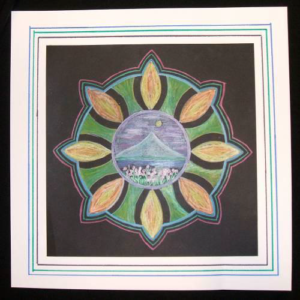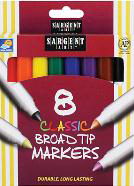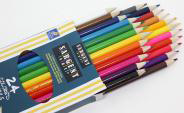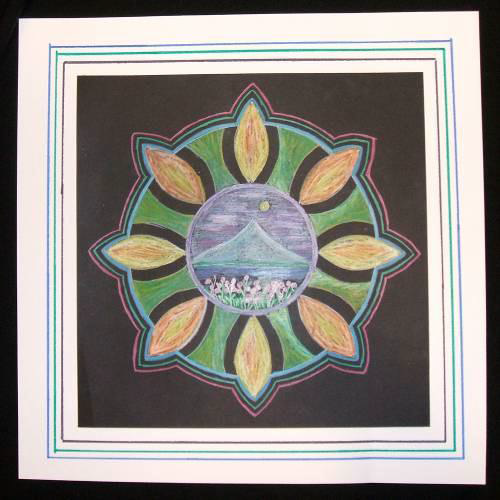A mandala is a design within a circle. It symbolizes the universe. The mandala originated in the region of the Himalayan Mountains, but people all over the world create these beautiful symmetrical designs. A mandala can have many meanings and often reflects beauty of nature and personal significance to the artist. A completed mandala should convey peace and joy to the viewer
http://artnetwork.com/Mandala/http://www.jyh.dk/indengl.htm

Teacher-created example of a mandala
Goal (Terminal Objective):
Students will create art works that result from their understanding of radial symmetry found in mandala art. These art works will express the symmetry found in every mandala. They will include symbolism of self and environment.
Objective:
Students will design and color mandalas that develop around the elements of design, focusing on radial symmetry and symmetrical balance. Each student will include geometric and organic images that are personal to him/her. Students will learn the history of the mandala and be able to recognize mandala art in their own cultures.
National Standards:
Visual Arts Grades K-4 Content Standard 1: Understanding and applying media, techniques, and processes
Visual Arts Grades K-4 Content Standard 2: Using knowledge of structure and functions
Visual Arts Grades K-4 Content Standard 3: Choosing and evaluating a range of subject
matter, symbols, and ideas
Visual Arts Grades K-4 Content Standard 4: Understanding the visual art in relation to history and culture
Visual Arts Grades K-4 Content Standard 5: Reflecting upon and assessing the characteristics and merits of their work and the work of others
Purpose:
Students will focus on drawing symbols and images that are significant to them. They will understand line of symmetry, radial symmetry, and symmetrical balance. Their symbols and images will be drawn into original mandalas. Students will learn to blend colors and create the effect of illumination in their drawings. The completed mandalas will help students understand how an art that originated in the region of the Himalayan Mountains has become an art form used in cultures around the world.
New Vocabulary:
mandala, radial symmetry, line of symmetry, symmetrical balance, symbolism, Himalayan Mountains, geometric, organic
Materials:

#22-1530 Classic Broad Tip Peggable Carton Markers

#22-7224 Colored Pencils

#23-1505 Peggable Craft Glue

#23-40xx 50 ct. Construction Paper Pack

#22-0914 12 ct. Pointed Tip Student Scissors Best-Pack
heavy black construction paper, pencils, rulers, scissors, circle templates, white tag board for border
Time:
5 lessons (30-45 minutes each)
Introduction and Motivation (Set):
- Teacher introduces students to the art of the mandala. Students view several mandala drawings from the region of the Himalayan Mountains. What do they have in common? Which colors are prominent? Are the designs complex? Where are the Himalayan Mountains? Students look at a world map. What is the highest peak of the mountains?
- Teacher introduces new vocabulary.
- Teacher asks students to complete a personal interests survey. Students respond and write down a favorite food, sport, hobby, game, vacation, pet, movie, color, season, holiday, place in nature, and special memory.
Instruction:
Lesson 1:
Teacher presents several mandala drawings to students. Class discussion includes finding the line of symmetry and noting how each mandala has included symbols and images.
What images and shapes have the artists used? Students think about symbolism and images in their lives. Students complete the personal interests survey. Teacher demonstrates line of symmetry, radial symmetry, and symmetrical balance. Students sketch ideas for their mandalas on sketch paper.
 Lesson 1
Lesson 1Lesson 2:
Following a teacher demonstration, students trace circular templates on black paper using white colored pencil. If desired, students may divide their circles in half or in quarters to help keep their designs symmetrical. Drawing lightly with white colored pencil, students transfer their mandala sketches onto the black paper for the final drawing. The final design should incorporate geometric and organic shapes and use repetitive patterns. The final design may extend beyond the circle template.
 Lesson 2
Lesson 2Lesson 3:
Teacher demonstrates coloring the mandala design with white colored pencil, creating various degrees of illumination by varying the line drawing and fill-in. Students use Sargent Art white colored pencils to illuminate their mandala drawings.
 Lesson 3
Lesson 3Lesson 4:
Teacher demonstrates blending colored pencils over the drawing from Lesson 3. Teacher explains the significance of colors in mandalas. White means the wisdom of reality. Yellow means the wisdom of sameness. Red means the wisdom of discernment. Green means the wisdom of accomplishment. Blue means the mirror of wisdom.
Students may choose traditional colors or colors that are more personal to them. White colored pencil may be added over the colors to highlight selected areas.
 Lesson 4
Lesson 4Lesson 5:
Students glue their completed mandala drawings onto 16” x 16” white tag board and create a frame design using markers. Teacher demonstrates line design techniques and emphasizes repeating colors used in the mandala drawing.
Activities:
(1) Guided Practice:
- Students learn about the art of designing mandalas with personal meaning. Students watch teacher’s step-by-step demonstrations and discuss teacher exemplars.
- Students design an original mandala using Sargent Art colored pencils, focusing on symmetrical balance.
(2) Independent Practice and Check for Understanding:
- Teacher circulates through the room during student work time, answering questions and offering support as needed.
- Teacher notes students’ understanding of directions and reviews with the class if necessary.
(3) Closure:
- Teacher helps students mount their mandalas on 16” x 16” white tag board. The frames are decorated and mandalas are exhibited. Students take time to evaluate their work and look at the work of classmates. They explain the symbolism in their drawings to the class.
- Students discuss the importance of respect for individuality.
Evaluation:
Level One — The artwork conveys good understanding of the mandala, symbolism, and symmetry. Many design elements are used, including geometric and organic shapes. The finished drawing is detailed with repetition of color and shape. The border enhances the drawing. Craftsmanship is excellent. Student handles materials with confidence. The design shows a high degree of originality.
Level Two – The artwork conveys understanding of the mandala, symbolism, and symmetry. The finished drawing incorporates geometric and organic shapes. There is some repetition of color and shape. The border enhances the drawing. Craftsmanship is good. Student handles materials with confidence. The design is original.
Level Three — The student has made an effort to convey some understanding of the mandala, symbolism, and symmetry. Geometric and organic shapes are used. The finished drawing lacks detail. The border does not enhance the drawing. Craftsmanship is fair. The design is original.
Level Four — The artwork does not convey understanding of the mandala, symbolism and symmetry. Design elements are not evident. Geometric and organic shapes are not used. The finished drawing lacks detail. The border is not completed. Craftsmanship is poor. The student needs much support throughout the project. The design lacks originality.
Extension:
Students can use the internet to research further information on the region of the Himalayan Mountains. They can gather facts about the mountains and Mt. Everest,including expeditions and information on climbers. Students can report their findings to the class.
Resources:
http://en.wikipedia.org/wiki/Mandala_systems
http://www.graphics.cornell.edu/online/mandala/
http://en.wikipedia.org/wiki/Himalaya
http://mounteverest.net
Art Consultant



